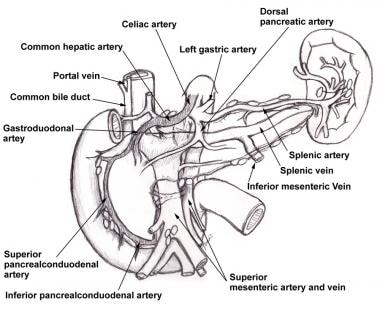Abdominal angina is a vascular disorder of blood vessels in the abdomen similar to the problem in coronary arteries that causes pain in the chest. The abdominal arteries become occluded with atherosclerotic vascular disease. After eating a meal, the intestines require additional oxygen and blood to process food. If the blood vessels are too narrowed, there is not enough oxygen and blood capable of flowing to the intestines and the result is pain and discomfort. The three arteries involved are the superior mesenteric artery, inferior mesenteric artery and celiac artery.

The most common presentation of Abdominal Angina is abdominal pain that occurs a few minutes after eating. The pain becomes so severe that the individual will stop eating and lose weight.
The diagnosis is made by injecting dye into the blood vessels and seeing which areas are narrowed by disease. Those areas can then be bypassed with a surgical procedure.